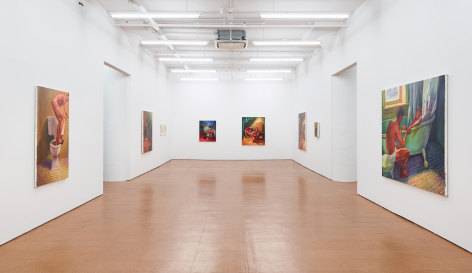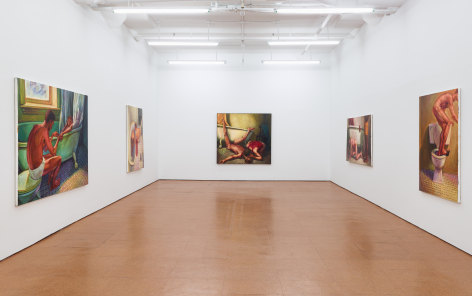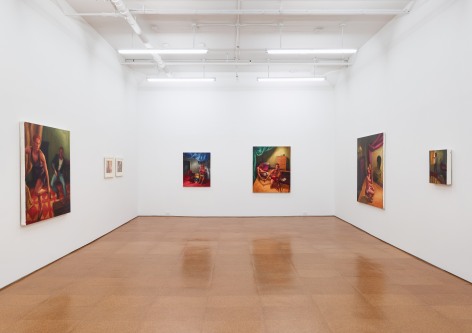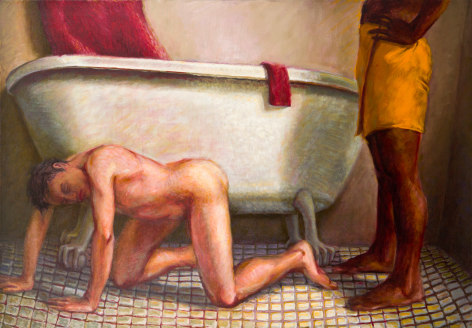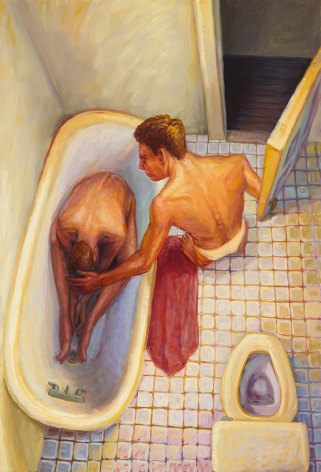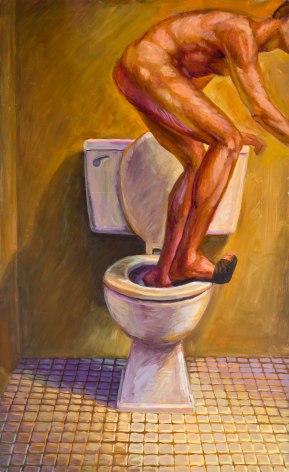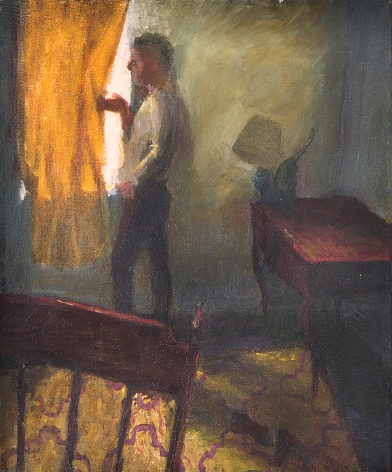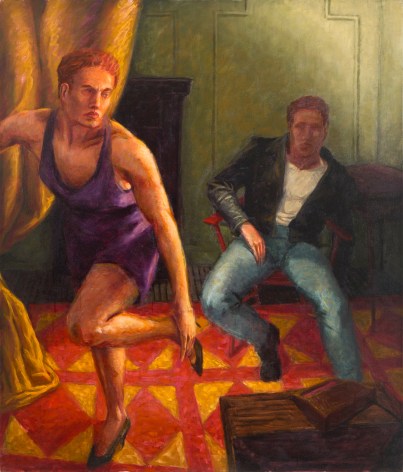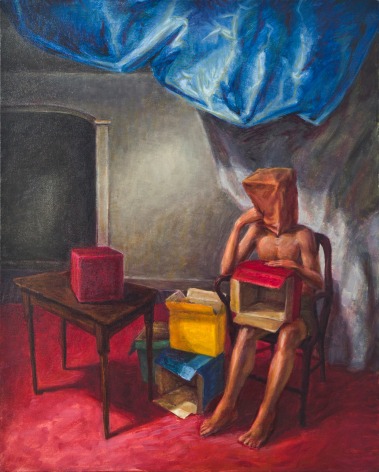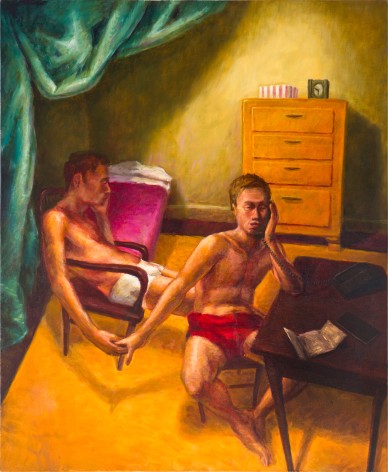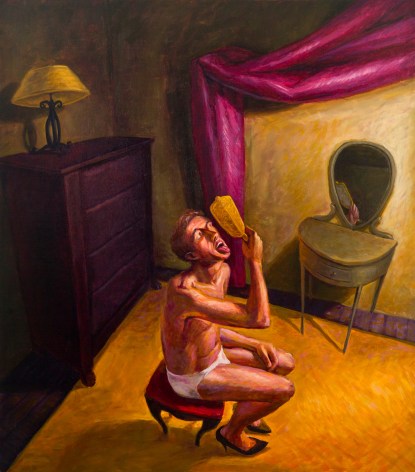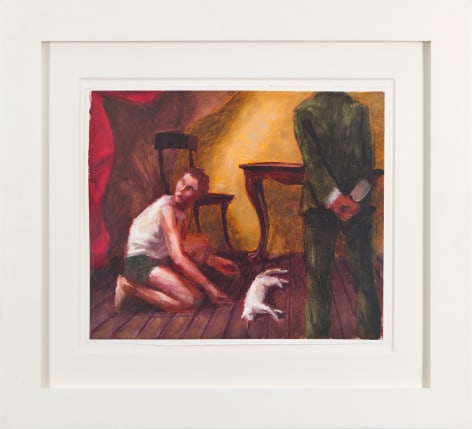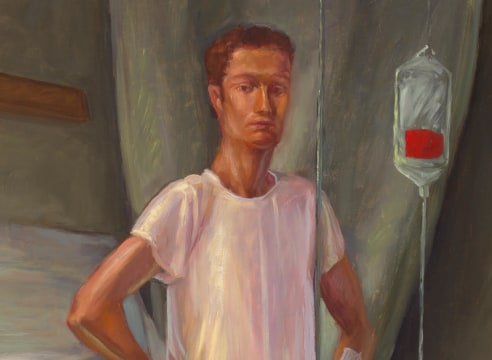
Alexander Gray Associates was pleased to present its first solo exhibition of works by Hugh Steers, featuring paintings and works on paper produced from 1987–1993. Throughout his career, cut dramatically short by AIDS at the age of 32, Steers was celebrated for his allegorical painting that captured the emotional and political tenor of New York in the late 1980s and early 1990s, particularly the impact of Queer identity and the AIDS crisis.
Dedicated to figurative painting despite a hostile artistic climate, Steers deliberately experiments with the role of beauty, manipulating the medium to create palpable tension between visual appeal and raw content. Familiar interior spaces—the bathroom and the bedroom—provide the stage for Steers' complex narratives. In Purple Velvet Dress (1989), delineations of real and imaginary, ego and alter-ego, eroticism and isolation become blurred. Later, in works from the 90s, anxiety and mortality grow in presence, haunting the corpulent figures and casting a brutal glow onto the scene. Throat (1991) takes a more literal stance, depicting the torture of anticipation as illness looms imminent.
At once biographical and allegorical, the intimate domestic scenes on view employ a style deeply rooted in art historical tradition to depict contemporary issues with extraordinary immediacy. Recalling his influential American predecessors, including Thomas Eakins, Paul Cadmus, Marsden Hartley, and Charles Demuth, Steers renders tenderness, isolation, intimacy, and psychological dilemma through dramatic use of color, skewed perspective, and radiant golden light.

